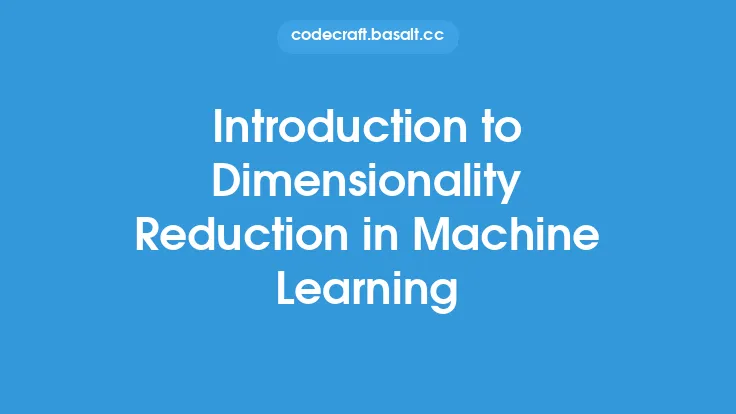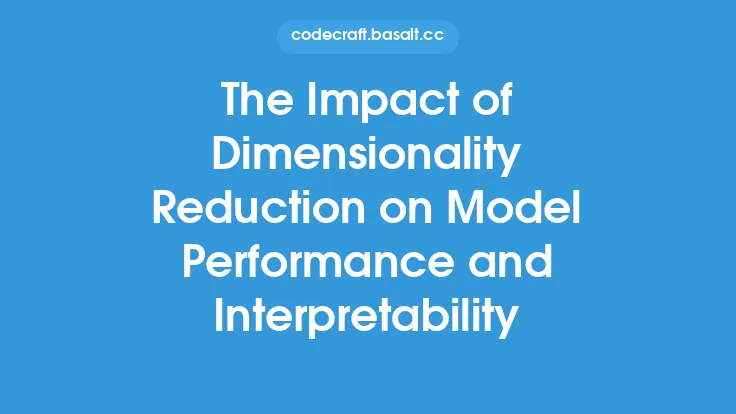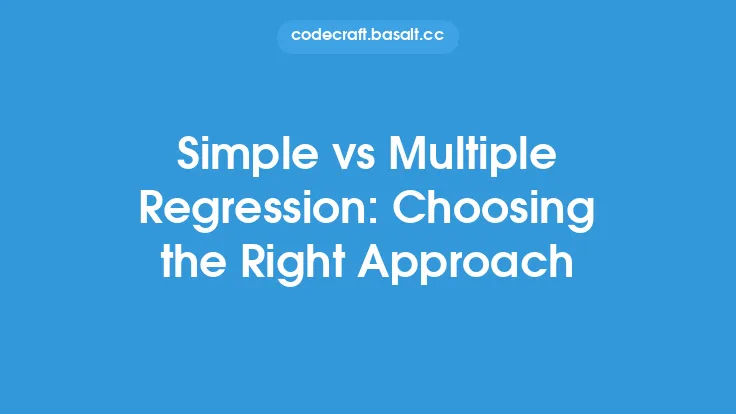Dimensionality reduction is a crucial step in machine learning, as it enables the transformation of high-dimensional data into a lower-dimensional representation, making it easier to analyze and visualize. One of the most powerful techniques for dimensionality reduction is the use of autoencoders, a type of deep learning model. In this article, we will delve into the world of autoencoders and explore how they can be used for dimensionality reduction.
Introduction to Autoencoders
Autoencoders are a type of neural network that consists of two main components: an encoder and a decoder. The encoder maps the input data to a lower-dimensional representation, known as the bottleneck or latent representation, while the decoder maps the bottleneck representation back to the original input data. The key idea behind autoencoders is that by training the model to reconstruct the input data, the bottleneck representation will capture the most important features of the data.
Architecture of Autoencoders
The architecture of an autoencoder typically consists of multiple layers, including the input layer, hidden layers, and the output layer. The input layer receives the input data, which is then passed through one or more hidden layers, known as the encoder, to produce the bottleneck representation. The bottleneck representation is then passed through one or more hidden layers, known as the decoder, to produce the reconstructed output. The number of layers and the number of units in each layer can vary depending on the specific problem and the size of the input data.
Training Autoencoders
Training an autoencoder involves minimizing the difference between the input data and the reconstructed output. This is typically done using a reconstruction loss function, such as mean squared error or cross-entropy. The model is trained using backpropagation, where the error is propagated backwards through the network to update the model parameters. The training process can be divided into two stages: the encoding stage, where the model learns to map the input data to the bottleneck representation, and the decoding stage, where the model learns to map the bottleneck representation back to the original input data.
Types of Autoencoders
There are several types of autoencoders, each with its own strengths and weaknesses. Some of the most common types of autoencoders include:
- Simple Autoencoders: These are the most basic type of autoencoder and are trained using a reconstruction loss function.
- Convolutional Autoencoders: These are used for image data and use convolutional layers to extract features from the input data.
- Recurrent Autoencoders: These are used for sequential data, such as time series data or natural language processing, and use recurrent layers to extract features from the input data.
- Variational Autoencoders: These are a type of autoencoder that learns a probabilistic representation of the input data and are trained using a variational loss function.
Dimensionality Reduction using Autoencoders
Autoencoders can be used for dimensionality reduction by training the model to produce a lower-dimensional bottleneck representation. The bottleneck representation can then be used as a reduced representation of the input data. One of the key advantages of using autoencoders for dimensionality reduction is that they can learn non-linear relationships between the input features, allowing for more effective reduction of high-dimensional data.
Advantages of Autoencoders for Dimensionality Reduction
Autoencoders have several advantages when it comes to dimensionality reduction. Some of the key advantages include:
- Non-linear dimensionality reduction: Autoencoders can learn non-linear relationships between the input features, allowing for more effective reduction of high-dimensional data.
- Flexibility: Autoencoders can be used for a wide range of data types, including images, text, and time series data.
- Robustness to noise: Autoencoders can learn to ignore noise in the input data, producing a more robust reduced representation.
Applications of Autoencoders for Dimensionality Reduction
Autoencoders have a wide range of applications, including:
- Image compression: Autoencoders can be used to compress images, reducing the amount of data required to store or transmit them.
- Anomaly detection: Autoencoders can be used to detect anomalies in data, such as outliers or errors.
- Data visualization: Autoencoders can be used to visualize high-dimensional data, reducing the dimensionality of the data to a lower-dimensional representation that can be more easily visualized.
Challenges and Limitations of Autoencoders for Dimensionality Reduction
While autoencoders have many advantages, they also have some challenges and limitations. Some of the key challenges and limitations include:
- Training time: Training an autoencoder can be computationally expensive, requiring a large amount of data and computational resources.
- Overfitting: Autoencoders can suffer from overfitting, where the model becomes too specialized to the training data and fails to generalize to new data.
- Choosing the right architecture: Choosing the right architecture for an autoencoder can be challenging, requiring a deep understanding of the data and the problem being solved.
Conclusion
In conclusion, autoencoders are a powerful tool for dimensionality reduction, offering a flexible and robust way to reduce high-dimensional data to a lower-dimensional representation. While they have many advantages, they also have some challenges and limitations, requiring careful consideration of the architecture and training process. By understanding how autoencoders work and how to use them effectively, machine learning practitioners can unlock the full potential of their data and gain new insights into complex problems.





